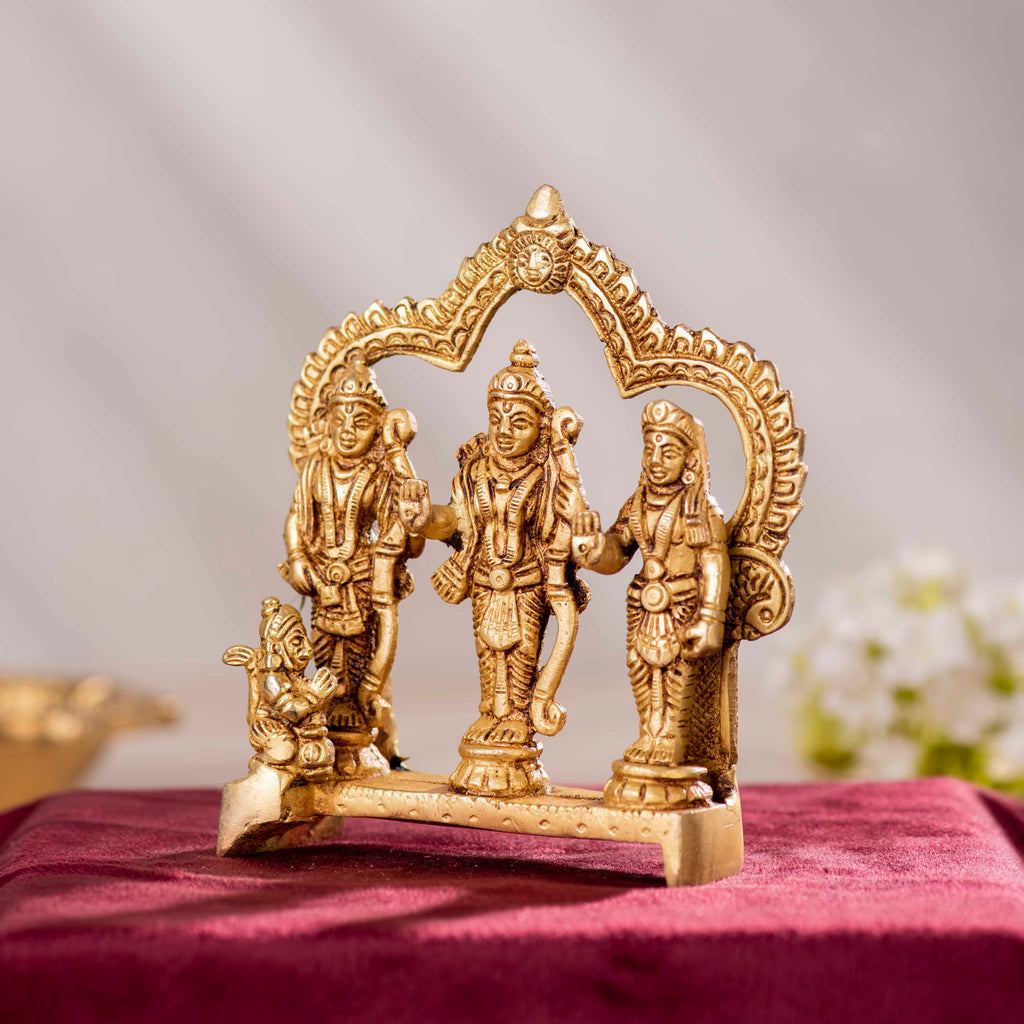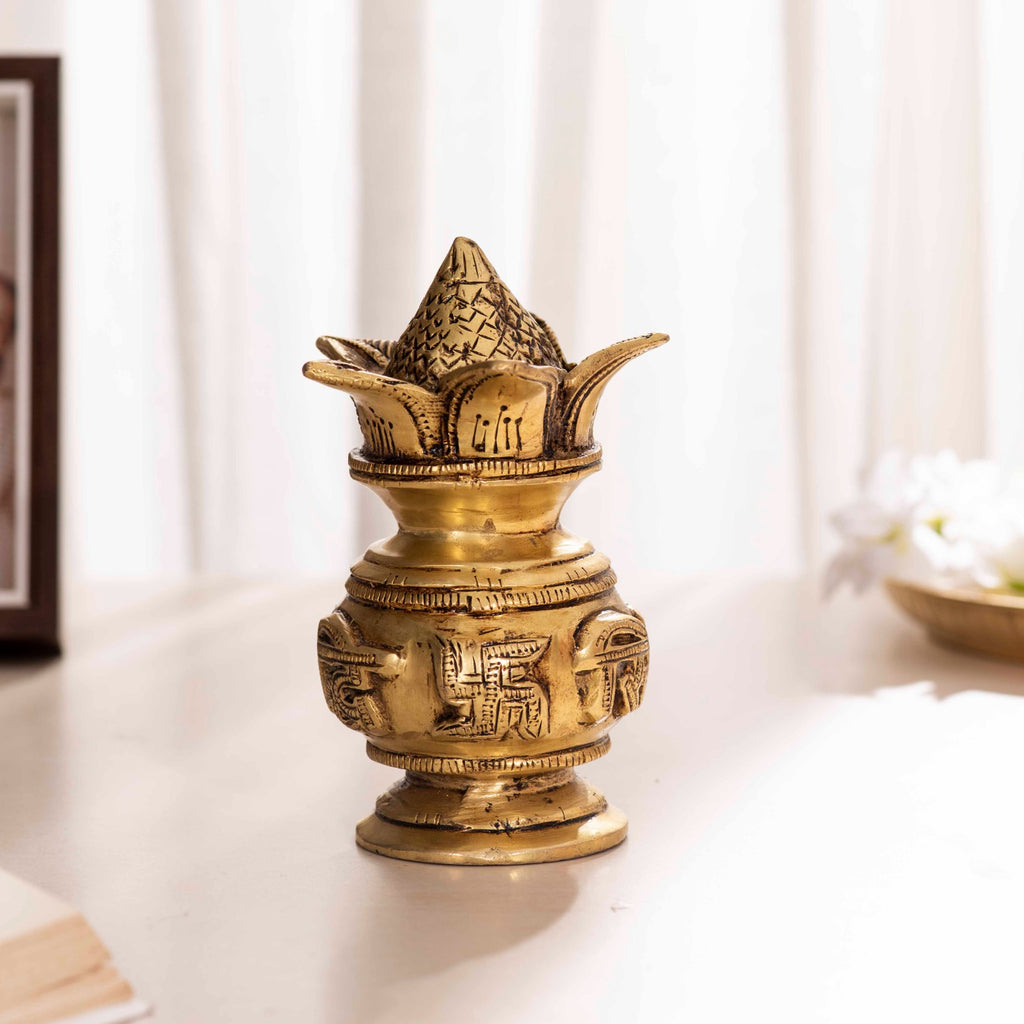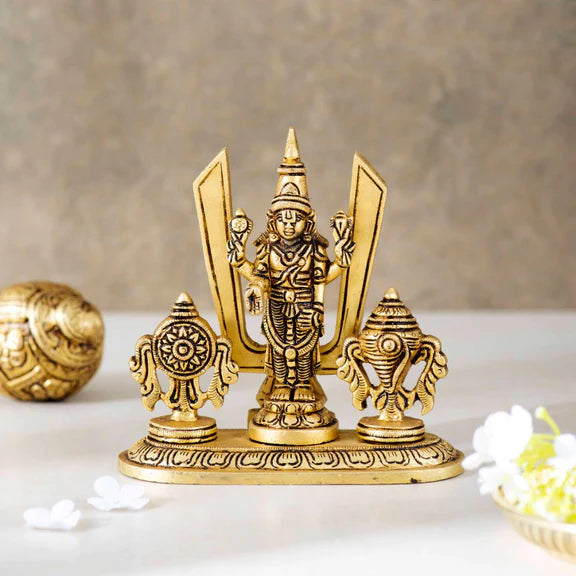News

Brass Ram Darbar – A Symbol of Divinity, Strength & Harmony
The Ram Darbar occupies a very unique position in Indian spirituality and culture. It is not merely an image of Lord Ram, Goddess Sita, Lord Lakshman, and Lord Hanuman all together, but an unyielding symbol of dharma, bravery, love, devotion, and triumph of good over evil.
Common Mistakes to Avoid While in Shradh

Laxmi Puja Vidhi-2023
Laxmi Puja Vidhi - Diwali 2023
*1. * Preparation:
Clean your house thoroughly, creating a pure and welcoming atmosphere for Goddess Lakshmi.
Decorate the entrance with colorful rangoli and light oil lamps (diyas) to invite positive energy.
Set up a clean and quiet space for the puja, preferably in your home's prayer room.
*2. * Gather Puja Items:
Idol or image of Goddess Lakshmi
Idol or image of Lord Ganesha
Coins
Flowers, especially lotus flowers (considered auspicious for Lakshmi)
Fruits and sweets as offerings
Incense sticks, camphor, and oil lamps
Puja thali (plate) containing turmeric, kumkum, rice, and water
A new notebook and pen for accounting purposes (symbolizing wealth)
*3. * Puja Ritual:
Begin by lighting the oil lamps and incense sticks.
Place the idols or images of Goddess Lakshmi and Lord Ganesha on a clean cloth on the puja altar.
Offer water, turmeric, kumkum, and rice to the deities while chanting their respective mantras.
Perform aarti (waving of lamps) to the deities while singing hymns or bhajans in their praise.
Offer flowers, fruits, sweets, and coins to the deities as a symbol of devotion and gratitude.
*4. * Goddess Lakshmi's Mantra:
Chant Goddess Lakshmi's mantra: "Om Shreem Hreem Shreem Kamale Kamalalaye Praseed Praseed" while offering flowers.
Recite this mantra with sincerity and devotion.
*5. * Lord Ganesha's Mantra:
Chant Lord Ganesha's mantra: "Om Gam Ganapataye Namaha" while offering sweets or fruits.
Seek the blessings of Lord Ganesha for the successful completion of the puja.
*6. * Accounting Ritual (Chopda Pujan):
Write accounts and business transactions in the new notebook, symbolizing the prosperity of your business or finances.
Offer this notebook to Goddess Lakshmi and Lord Ganesha as a mark of your dedication to ethical wealth and prosperity.
*7. * Aarti and Prayers:
Perform aarti with camphor, circling it in front of the deities and then seeking their blessings by touching it to your eyes and forehead.
Offer your personal prayers, expressing gratitude, and seeking blessings for your family's well-being and prosperity.
*8. * Distribution of Prasad:
Distribute the blessed prasad (offerings) to your family members and guests, spreading the divine blessings.
*9. * Safe Celebrations:
If you plan to burst crackers, ensure a safe environment following local guidelines and prioritizing safety.
*10. * Charity and Gratitude:
Consider donating to the less fortunate as an act of charity, which is an essential part of Laxmi Puja.
Express gratitude for the blessings in your life and share your wealth with those in need.
Remember, the key to a successful Laxmi Puja is devotion, sincerity, and a pure heart. May Goddess Lakshmi shower her blessings on you and your family, bringing prosperity and happiness into your lives.

Brass handicrafts In India
1. Historical Roots of Brass Handicrafts:
Explore the historical evolution of brass handicrafts in India, tracing their origins to ancient civilizations.
Discuss how different regions in India developed unique styles and forms of brass craftsmanship.
2. Traditional Brass Artifacts:
Showcase a variety of traditional brass handicrafts, including figurines, utensils, religious idols, jewelry, and home decor items.
Highlight the cultural and religious significance of certain brass artifacts, like temple bells and puja accessories.
3. Artistic Techniques and Craftsmanship:
Explain the intricate techniques involved in brass casting, engraving, and embossing.
Discuss the skillful artistry of Indian artisans, emphasizing the attention to detail and precision.
4. Famous Brass Handicraft Clusters:
Introduce readers to renowned brass handicraft clusters in India, such as Moradabad in Uttar Pradesh and Puri in Odisha.
Describe the unique features and specialties of each region, showcasing the diversity of brass craftsmanship.
5. Modern Adaptations and Innovation:
Explore how traditional brass handicrafts have adapted to modern tastes and preferences.
Discuss innovative designs and contemporary applications of brass artifacts in interior decor and fashion.
6. Preserving the Art:
Address the challenges faced by traditional brass artisans, including competition from mass-produced items and changing market demands.
Discuss the importance of preserving these crafts and supporting artisans to sustain this ancient tradition.
7. Shopping for Brass Handicrafts:
Provide tips for readers on how and where to buy authentic brass handicrafts in India, both online and in physical stores.
Include suggestions on what to look for to ensure the quality and authenticity of the products.
8. Brass Handicrafts Around the World:
Explore the global appeal of Indian brass handicrafts, discussing their popularity in international markets and museums.
Conclusion:
Reiterate the timeless charm of brass handicrafts and their significance in Indian art and culture.
Encourage readers to appreciate and support the rich heritage of Indian craftsmanship by embracing these exquisite brass creations.
Feel free to expand on any section or add specific details to tailor the blog post to your liking!

How to select a suitable Ganesha idol for your Home
1. * Consider the Size:
Assess the available space in your home where you plan to place the idol.
Choose a size that fits harmoniously into the designated space, ensuring it doesn’t look too big or too small.
*2. * Select the Material:
Ganesh idols are made from various materials such as clay, marble, metal, and resin.
Clay idols are eco-friendly and dissolve in water, making them environmentally conscious choices.
Marble and metal idols are durable and suitable for long-term display, often considered for home altars.
Consider your preferences and the significance of the idol's material in your decision-making process.
*3. * Pay Attention to Details:
Examine the craftsmanship and attention to detail in the idol.
Look for intricate carvings, well-defined features, and a sense of artistry that reflects the essence of Lord Ganesh.
*4. * Symbolism and Poses:
Ganesh idols come in various poses, each carrying a unique symbolism.
The most common pose is "Sitting with one leg folded", symbolizing meditation and inner peace.
"Standing" Ganesh idols represent new beginnings and progress.
"Dancing" Ganesh idols symbolize rhythm and creativity.
Choose a pose that resonates with the energy you want to invite into your home.
*5. * Color and Aesthetics:
Consider the color of the idol. Traditional Ganesh idols are often painted in vibrant shades of red, yellow, and gold.
Ensure the colors are well-blended and not too flashy, maintaining an aesthetic appeal that aligns with your home decor.
*6. * Personal Connection:
Trust your intuition and choose an idol that you feel a personal connection with.
Some people prefer idols with a smiling face, radiating positivity, while others may prefer a more serene expression.
*7. * Placement and Worship:
Decide where you will place the idol in your home. It could be your puja room, living room, or any other designated space.
Plan how you will worship the idol, including daily rituals and special occasions.
*8. * Ethical Considerations:
Ensure that the idol was ethically sourced and made by skilled artisans who are treated fairly.
Consider purchasing from reputable sellers or artisan communities to support ethical practices.

